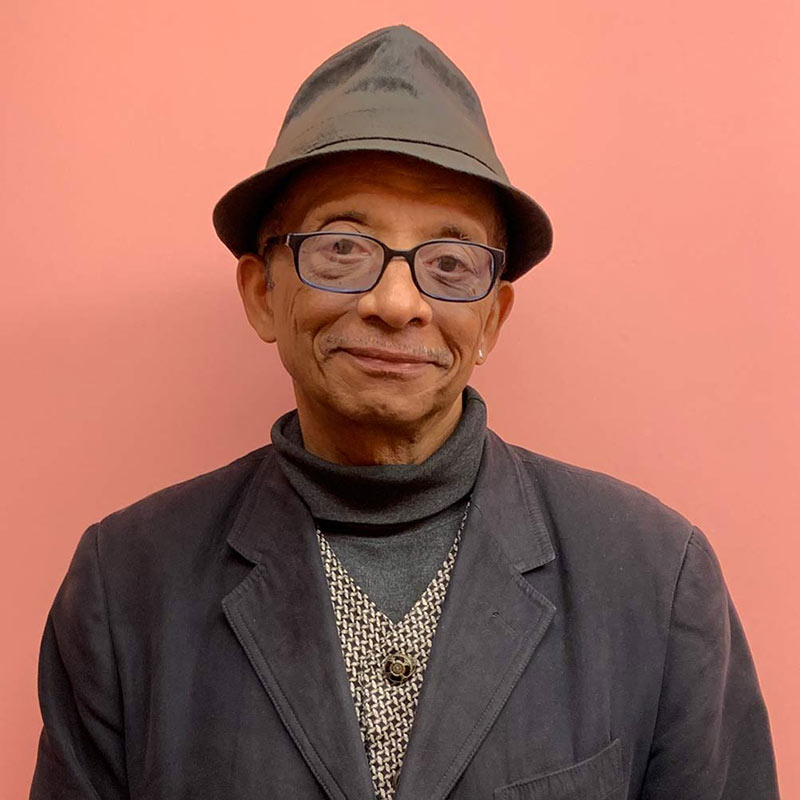
Oral Histories

Stan West
Stan was born in Chicago in 1952 and came to Champaign for his Journalism degree, which he acquired in 1973 in what he calls "the second wave of the Project 500", which brought Black students to campus. Stan is an author, journalist and oral historian.
Stan talks about how his paternal great-grandparents came to Chicago to escape being lynched and how his parents used dance to escape pain and suffering. He relates his epiphany of how the lyrics in blues music was used to express the injustices of racism and sexual harassment. He notes as a student how segregation impacted the dance scene in CU.
Stan West Oral Histories
Blue Light Red Light
Lyrics in Blues Music and Racism
Transcript
And for me, even though I came from Chicago, I always was cool with the music, but not the lyrics. To me, the lyrics were rather depressing and apolitical. I didn't know better. Later, I wound up understanding that the blues was very political. Muddy Waters’s famous song I'm a Man was not just swaggering braggadocio, but he was talking about how white guys in the South could not refer to grown African American males as "boy". That was his declaration. That was a political statement. Many of the early blues artists and most of them were women were decrying sexual harassment and were talking about sexual freedom on lots of levels.
Dancing on the North End, Across University Avenue
Transcript
Folks of color, but many whites would also show up at our parties at the frat house and sorority houses in the other centers, both on campus but also in the north end. So it was fascinating that some of us felt compelled to party in the north end too. I was just as comfortable thereas on campus. I can't say that was everybody. I can't even say that was most of us. But some of us felt it was a seamless transition was just folks across University Avenue.
Off campus in the North end they were at community centers and sometimes at people houses. And later, at bars.
His parents danced to exercise pain and suffering
Transcript
Stan: My parents did dance, better than I did [lauging]. Even my Mom still.
Jennifer: How did they dance?
Stan: Whatever the thing was, at the time. I remember they were doing the Twist, The Boogalooin the early 60s, they did all of it, the Mashed Potato. I remember all that stuff as a little shorty. But my parents did dance. My father drank probably a little bit too much, which is typical folks in his era. And he danced until he couldn’t dance no more. But mom was pretty cool about things in moderation even now. But yeah, they danced and that was their way of expressing the suffering and pain, exercising the suffering andpain that they have had to endure on a daily basis.
I think about that a lot, not just my parents but my grandparents when I have a bad day when I get some tickets, or somebody calls me a dirty, nasty, filthy, funky ass name. I'm like, damn, well, at least I'm not swinging by a tree, you know, lynching the things that my grandparents and great grandparents had to endure. I think about that a lot. I had a great grandmother on my paternal side, on my Dad's side. Sicilian Jewish woman who married an African American great grandfather, Christian man. Her name was Gulia with the G. She came to Syracuse. We believe she originated from somewhere in North Africa, when they were excising North African Jewish citizens. She wound up in Italy and she later wound up in Alabama where she met my great grandfather. In the 20s, they were given 24 hours to get out of town. Italians called itlinchiata, or being lynched. They left in 12. And they established the West homestead here in the Chicago area in the late 20s. I think about that a lot. You know, when I'm having a bad day well damn, at least I'm not being threatened to be lynched. She had she wasn't white, but white folks thought she was. I guess he was very light skin. They knew she was different. They knew she was European. But she was, you know, a light skinned Sicilian Jewish woman who married a black man in Alabama at a time that it wasn't acceptable. Even now, there's still some issues in Alabama with mixed race marriages. So, you know, I think about all of this stuff. It is serious, but you know, we manage it. You know, we're working through it.